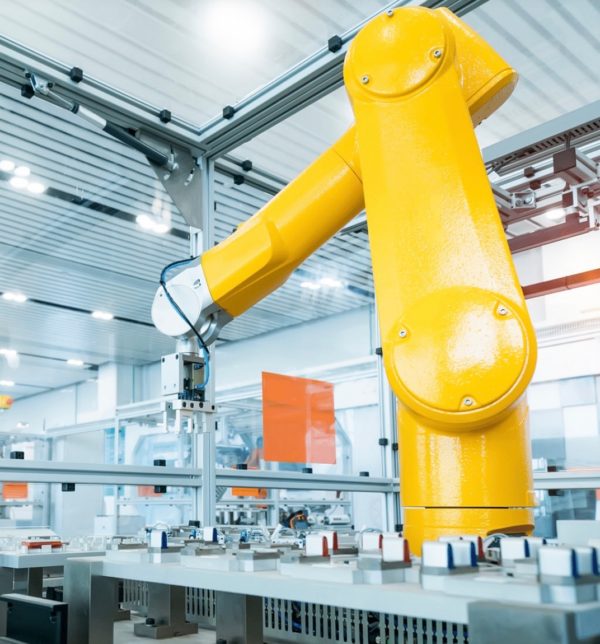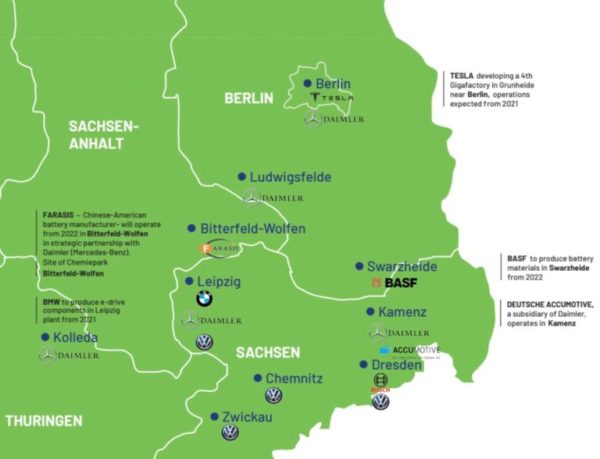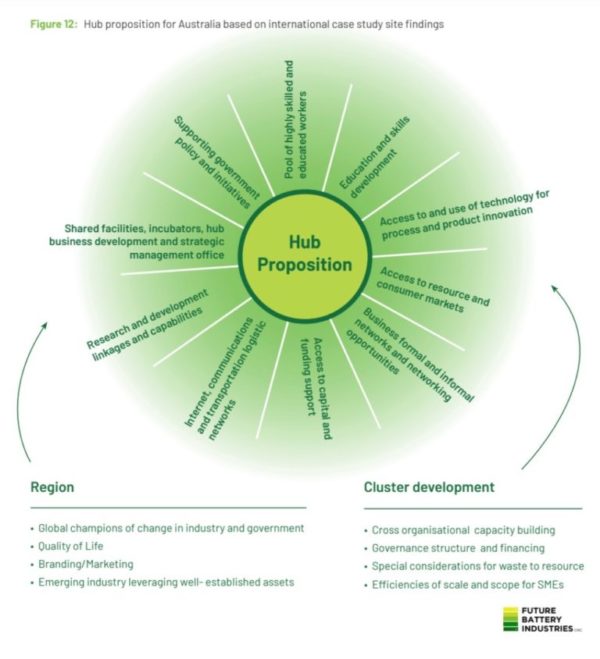From pv magazine International
A report published by the Future Battery Industries Cooperative Research Centre (FBICRC) has emphasized the role of co-located energy hubs for nations wishing to compete in the growing battery industry.
The author of the report, University of Western Australia (UWA) academic Kirsten Martinus, said that while energy hub development in the U.S., Germany and Japan were all various in their own ways, a common denominator amongst successful hubs was realizing the benefits of co-location and collaboration.
Given Australia’s wealth of mineral resources, what the report called “Australian ‘luck’”, Martinus believes Australia holds a competitive advantage for hub development. “One of the major challenges in attracting investment in establishing a domestic downstream battery material refining and manufacturing hub is the competition from countries in the northern hemisphere, who are also keen to realise the economic benefit from locating as many aspects of their supply chain within their own region.
Indeed, European Central Bank President Christine Lagarde this week reiterated the high vulnerability the European economy has to systemic shocks from supply chain disruptions, due to its globalized nature. Many in Europe have seen the global supply chain disruptions related to Covid-19, ethical concerns in China’s Xinjiang region (and resulting geopolitical action), and various other economic dominoes such as the current energy price surge, and come to the opinion that energy independence through establishing a domestic supply chain is the only way to go.

However, the development of a domestic manufacturing industry in Europe won’t happen overnight, and even if the continent can nurture its own renewable energy production industries, FBICRC CEO Stedman Ellis pointed to Australia’s “strong value proposition in meeting the rapidly growing demand for batteries, and a desire to diversify supply chains and to demonstrate high standards of ESG performance.” These are all qualities attractive to northern hemisphere markets.
Ellis pointed to the momentum already evident in the emerging technical grade battery chemicals industry in Kwinana and Kemerton, Western Australia (WA).
However, Australia still has some way to go if it is going to host key industry players in the battery manufacturing industry and move further into downstream production to take advantage of its natural wealth in what is a rapidly growing market on the verge of exponential expansion through trends like EV uptake.
The report compared three case studies of battery manufacturing hub development:
- The Leipzig-Dresden-Berlin (LDB) triangle in Germany.
- The Gigafactory in Nevada, U.S.
- Osaka, Japan

“The key lesson from the international case studies” the report concluded, “was they did not offer the cheapest labour, nor provide a perfect hub location in all aspects, but that industry and government collaborated to identify and leverage competitive advantages to strengthen regional development.”
Compared to these examples, Australia is at a relative distance from battery consumer markets and its supportive policy measures are mediocre at best. In order to overcome these disadvantages, the report recommends, among other things, for Australia to leverage its resources, to aggregate production efficiencies through site strategic selection and design, insist upon a circular economy and introduce resource traceability technologies.

If Australia can take advantage of this early momentum toward establishing battery hubs, says Ellis, it could achieve “a diversified battery industry in Australia worth AUD$7.4 billion (US$ 5.5 billion) in value annually and support over 34,000 jobs by 2030.”
However, in order to interest global markets in a post-pandemic world of supply-chain sensitivity, Australia will not only need to leverage its resources but ensure the its ESG measures are world-leading. Of course, competition from battery hubs in the U.S., Germany and Japan will have to do the same.
This content is protected by copyright and may not be reused. If you want to cooperate with us and would like to reuse some of our content, please contact: editors@pv-magazine.com.









By submitting this form you agree to pv magazine using your data for the purposes of publishing your comment.
Your personal data will only be disclosed or otherwise transmitted to third parties for the purposes of spam filtering or if this is necessary for technical maintenance of the website. Any other transfer to third parties will not take place unless this is justified on the basis of applicable data protection regulations or if pv magazine is legally obliged to do so.
You may revoke this consent at any time with effect for the future, in which case your personal data will be deleted immediately. Otherwise, your data will be deleted if pv magazine has processed your request or the purpose of data storage is fulfilled.
Further information on data privacy can be found in our Data Protection Policy.